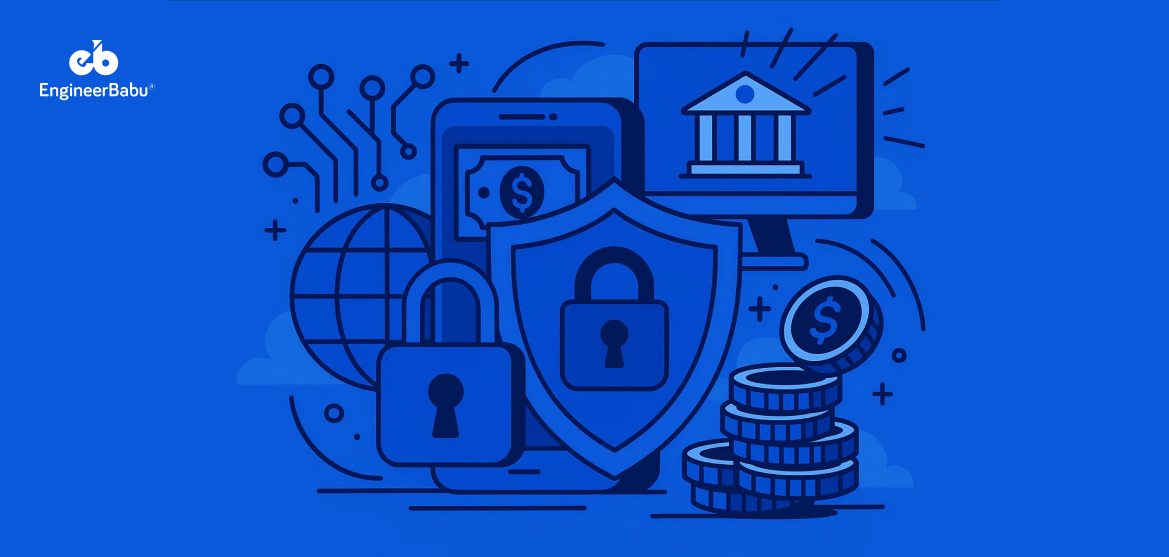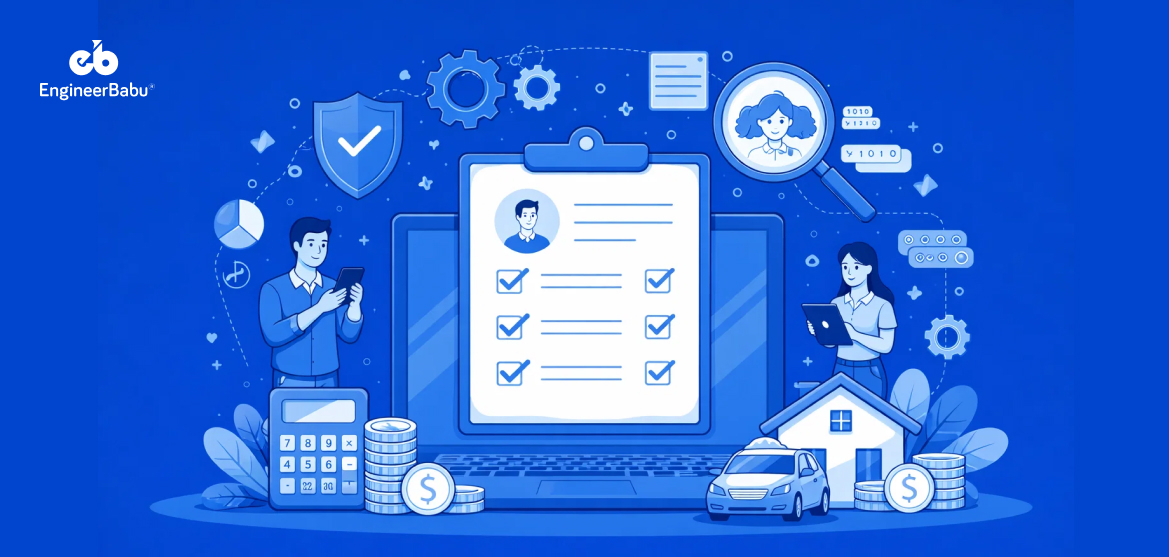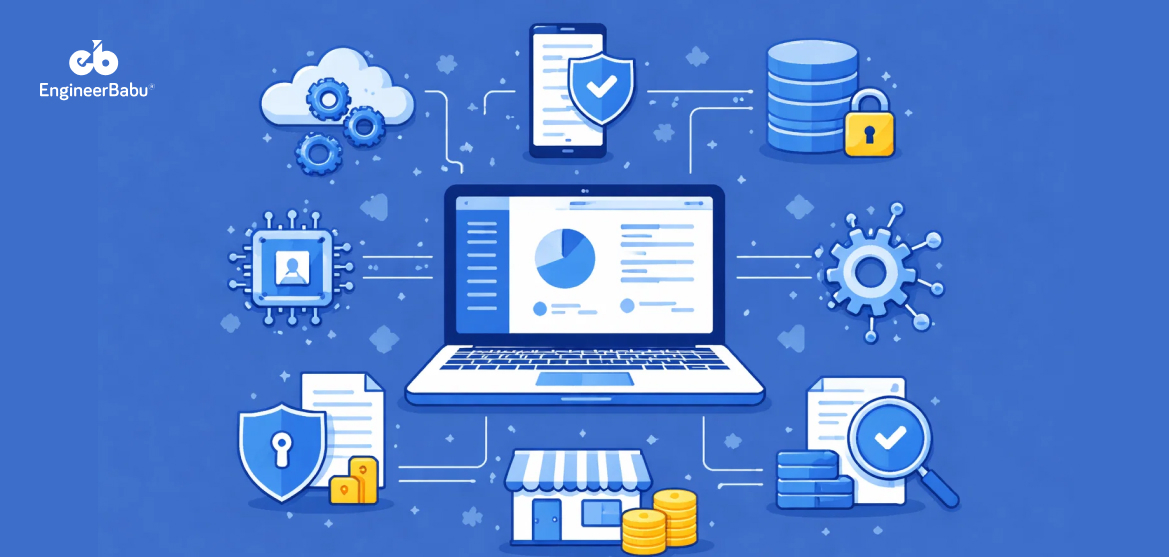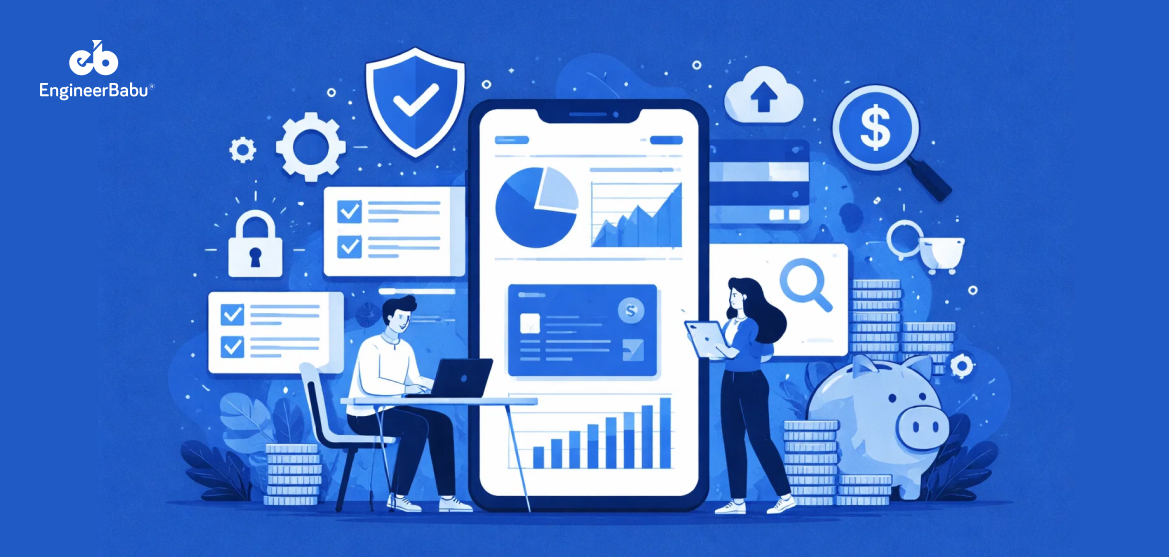Every swipe, tap, and click we make on a fintech app moves money at lightning speed, but it also opens the door to potential cyber threats. With digital wallets, instant loans, and investment apps now part of daily life, the real question is how quickly fintechs can strengthen security.
Cybercriminals are fully aware of the goldmine fintech platforms sit on: sensitive customer data and billions in digital transactions. A recent IBM report revealed that the average cost of a data breach in the financial sector reached $4.4 million in 2025. Thus, making finance one of the most targeted industries.
For fintech startups and established players alike, the stakes are higher than ever, a single breach can erode customer trust and trigger regulatory penalties.
That’s why cybersecurity in fintech has shifted from being a back-office IT concern to a boardroom priority. It’s no longer about installing firewalls or ticking compliance boxes; it’s about safeguarding the foundation of digital finance.
Therefore, in this blog, we’ll dive into why cybersecurity is crucial for fintech companies and the best practices they can adopt to stay ahead of evolving threats.
Why Cybersecurity in Fintech Matters
Fintech is built on trust. Users hand over their most sensitive information, like bank details, credit histories, and even biometric data, expecting it to be safe. A single security lapse can shatter that trust overnight.
The financial sector has long been a prime target for cybercriminals, and fintech platforms have only expanded the attack surface. Their rapid growth, reliance on API development, and integration with third-party services make them especially vulnerable.
Furthermore, the consequences of a breach go far beyond financial losses. Customers who lose money due to fraud are often slow to return, and investors may hesitate to back a platform that appears insecure. On top of that, regulators are quick to impose heavy fines for non-compliance, which can cripple startups and damage even established fintech brands.
In short, cybersecurity in fintech is not just about defending against hackers, it’s about protecting customer trust, meeting strict compliance standards, and ensuring business continuity in an industry where confidence is everything.
Key Cybersecurity Threats in Fintech
While fintech innovation has transformed how people save, invest, and borrow, it has also created new entry points for cybercriminals. Understanding the most common threats is the first step toward building resilient systems that protect users and maintain trust.
Phishing and Social Engineering Attacks
Hackers often bypass technology by targeting people instead. Phishing emails and fake login pages trick customers into sharing passwords or financial details. For fintech startups that thrive on seamless digital interactions, even one successful phishing campaign can compromise thousands of accounts. Thus, making user education and proactive monitoring essential.
Ransomware Disruptions
Ransomware attacks can freeze entire payment systems, locking businesses out of their own platforms until a ransom is paid. For fintech firms handling real-time transactions, downtime translates to lost revenue and angry customers. Therefore, building a solid disaster recovery plan and implementing solid cybersecurity in fintech practices can reduce the damage if ransomware strikes.
Insider Threats
Not all risks come from the outside. Employees or contractors with access to sensitive data may misuse privileges or unintentionally expose systems. Since fintech platforms often operate with distributed teams and third-party partners, enforcing role-based access control and monitoring unusual activity is critical to maintaining trust and compliance.
API Vulnerabilities
Fintech thrives on integrations, connecting best fintech APIs like payment gateways, banking APIs, and third-party tools. But poorly secured APIs can act as open doors for attackers. Exploiting these weaknesses may allow hackers to intercept transactions or manipulate financial data. Strengthening cybersecurity in fintech starts with rigorous API testing, encryption, and continuous monitoring of data flows.
Third-Party Risks
Vendors, cloud providers, and payment processors often extend the fintech ecosystem. However, weak security practices on their side can expose customer information. A fintech company’s reputation is only as strong as its weakest partner. This makes vendor due diligence, compliance audits, and ongoing monitoring essential parts of a strong security framework.
Regulatory Landscape in Fintech Cybersecurity
Fintech companies don’t just face hackers, they also operate under the watchful eyes of regulators. Laws are tightening worldwide, demanding stronger protections for financial data. Therefore, compliance and cybersecurity in fintech are the baseline for survival in a highly scrutinized industry.
Global Compliance Standards
Frameworks like GDPR, PCI DSS compliance, and SOC 2 set universal rules for handling financial and personal data. For fintech players expanding across borders, aligning with these standards ensures a consistent security baseline. Beyond avoiding penalties, compliance helps demonstrate transparency and accountability, qualities customers and investors now expect as part of doing business in digital finance.
PSD2 and Open Banking Regulations
In Europe, the Revised Payment Services Directive (PSD2) reshaped how banks and fintechs interact. It enforces stronger authentication, mandates secure APIs, and enables open banking. While it fosters innovation, it also raises the stakes for fintechs to implement robust safeguards. In this landscape, cybersecurity in fintech isn’t just protection, it’s the enabler of customer confidence and regulatory approval.
Region-Specific Mandates
Different regions add their own requirements. For example, India’s RBI has introduced strict cybersecurity guidelines for fintech firms handling payments. In the U.S., state-level laws like the CCPA govern consumer data usage. Ignoring these mandates can lead to hefty fines and restrictions. Thus, it is critical for fintechs to stay updated on every market they operate in.
The Cost of Non-Compliance
Failure to comply with regulations can lead to multimillion-dollar penalties, forced shutdowns, and even lawsuits. Beyond financial pain, non-compliance damages credibility, especially in an industry built on trust. Forward-looking fintech companies treat compliance not as a burden, but as a competitive advantage, a clear signal to customers that their data is handled with care.
Best Practices for Strengthening Cybersecurity in Fintech
Compliance sets the baseline, but true resilience comes from practical, everyday security measures. Fintech companies must balance user convenience with ironclad protections. Here are proven practices that help secure systems without slowing growth.
Data Encryption Everywhere
Financial data is the prime target for attackers. Encrypting information in transit and at rest ensures that even stolen data remains unreadable. For fintechs handling payments, loan approvals, or investment records, strong encryption algorithms are the foundation of cybersecurity in fintech. They turn sensitive information into useless strings for hackers attempting to exploit it.
Multi-Factor Authentication (MFA)
Passwords alone are no longer enough. MFA adds layers of protection by requiring biometrics, OTPs, or app-based confirmations. By enforcing MFA for both customers and employees, fintechs significantly reduce the chances of account takeovers. This practice not only prevents unauthorized access but also strengthens customer confidence in digital financial platforms.
Regular Penetration Testing
Hackers constantly look for weak spots. Simulated attacks through penetration testing reveal vulnerabilities before criminals do. For fintech firms running complex apps and integrations, regular testing isn’t a one-time exercise but an ongoing process. It keeps evolving systems aligned with best practices in cybersecurity in fintech. Thus, ensuring threats are detected and patched early.
Employee Security Training
The human element remains one of the biggest risks. Employees who unknowingly click phishing links or mishandle credentials can open doors to attackers. By investing in continuous training, fintechs reduce the likelihood of insider-driven breaches. Clear policies, simulated phishing drills, and awareness sessions keep staff engaged and prepared against evolving cybercrime tactics.
Secure API Management
Fintech platforms rely heavily on APIs to connect with banks, partners, and service providers. But unsecured APIs can leak sensitive data or allow unauthorized transactions. Strong API governance, including authentication, throttling, and encryption, builds resilience. For any fintech business, securing APIs is a non-negotiable step in strengthening overall cybersecurity in fintech strategies.
Zero Trust Architecture
Instead of assuming trust inside the network, zero trust verifies every access attempt. This model minimizes risks from insiders and compromised accounts. By segmenting data and continuously validating users, fintech companies create a layered defense. It also prevents attackers from moving laterally through systems and limits exposure even if one access point is compromised.
Third-Party Risk Management
Vendors and partners extend the fintech ecosystem but can also introduce vulnerabilities. A weak link in a third-party system can compromise customer data. Conducting vendor risk assessments, enforcing compliance audits, and maintaining monitoring protocols strengthen trust. For firms aiming to scale, strong oversight of third-party relationships is essential for maintaining a robust cybersecurity in fintech framework.
Conclusion
The future of finance depends on trust, and that trust rests firmly on how well companies secure their platforms. Cybersecurity in fintech is no longer a compliance checkbox, it’s the backbone of customer loyalty, regulatory approval, and long-term growth.
From encryption and MFA to zero trust frameworks and API security, proactive protection is what separates resilient fintechs from vulnerable ones.
If you’re building or scaling a fintech solution, the right development partner can make all the difference. At EngineerBabu, we don’t just build software, we integrate strong cybersecurity practices into every fintech product we deliver.
Ready to strengthen your platform with the right team? You can hire fintech developers from EngineerBabu to ensure your app is both innovative and secure.
FAQs on Cybersecurity in Fintech
Why is cybersecurity more critical in fintech than in other industries?
Fintech platforms handle sensitive financial and personal data, making them prime targets for attackers. Unlike other sectors, a single breach in fintech can cause immediate financial loss, regulatory penalties, and permanent damage to customer trust.
What are the biggest cybersecurity threats fintech companies face?
The most common threats include phishing attacks, ransomware, insider misuse, API vulnerabilities, and risks from third-party vendors. These attacks exploit fintech’s reliance on digital transactions and integrations.
How does regulation impact cybersecurity in fintech?
Regulators like RBI, GDPR, and PCI DSS impose strict rules on data handling, authentication, and security audits. Non-compliance can lead to multimillion-dollar fines, restrictions, or even forced shutdowns, making regulatory alignment essential.
What best practices should fintechs follow to stay secure?
Key practices include data encryption, multi-factor authentication, regular penetration testing, employee security training, secure API management, and adopting a trust architecture. These steps collectively strengthen security and reduce risk.
How can fintech startups build security without slowing innovation?
Startups can embed security from the design stage, adopt cloud-native security tools, and leverage expert partners. Partnering with experienced teams who specialise in both fintech and cybersecurity, like EngineerBabu, allows startups to balance speed with safety.




